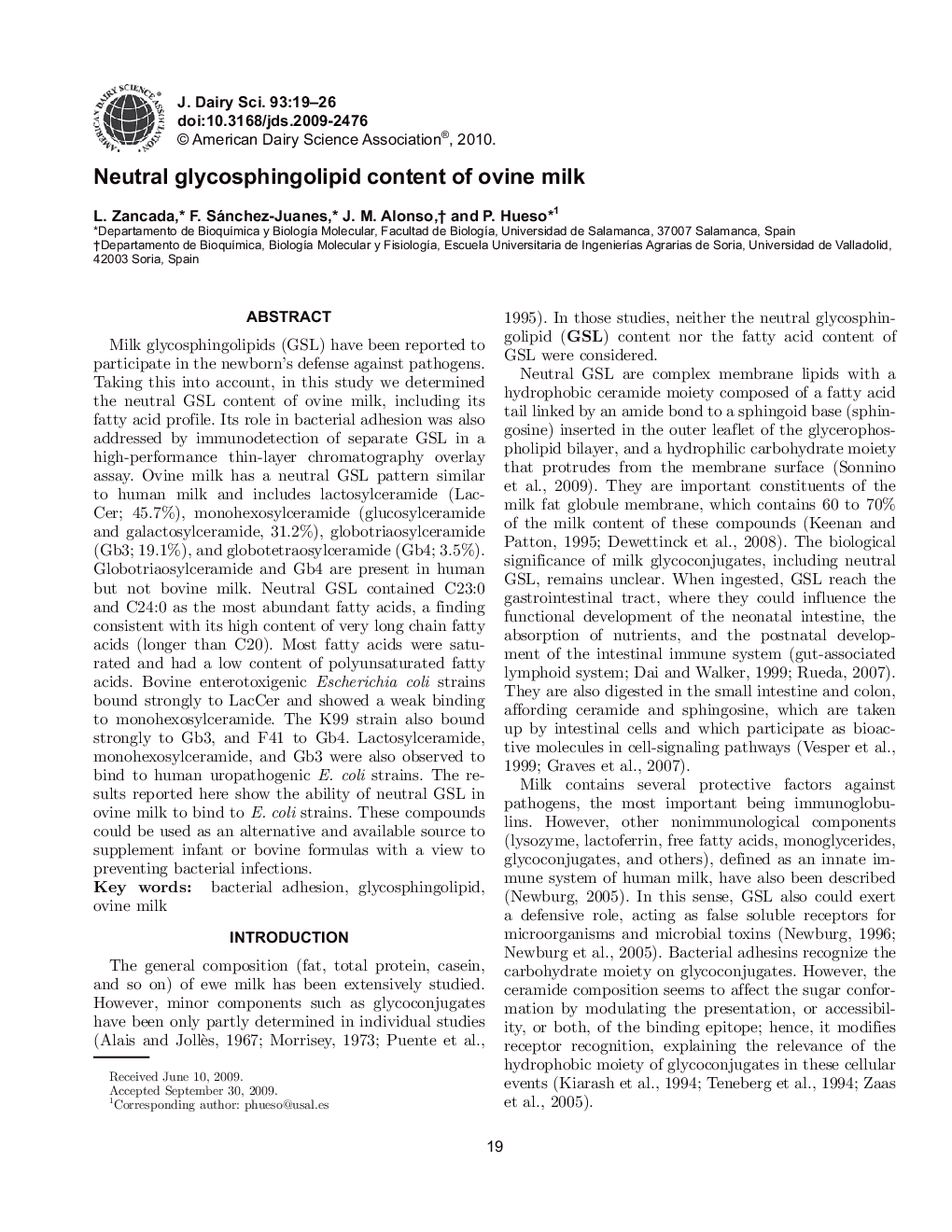| Article ID | Journal | Published Year | Pages | File Type |
|---|---|---|---|---|
| 5789806 | Journal of Dairy Science | 2010 | 8 Pages |
Abstract
Milk glycosphingolipids (GSL) have been reported to participate in the newborn's defense against pathogens. Taking this into account, in this study we determined the neutral GSL content of ovine milk, including its fatty acid profile. Its role in bacterial adhesion was also addressed by immunodetection of separate GSL in a high-performance thin-layer chromatography overlay assay. Ovine milk has a neutral GSL pattern similar to human milk and includes lactosylceramide (LacCer; 45.7%), monohexosylceramide (glucosylceramide and galactosylceramide, 31.2%), globotriaosylceramide (Gb3; 19.1%), and globotetraosylceramide (Gb4; 3.5%). Globotriaosylceramide and Gb4 are present in human but not bovine milk. Neutral GSL contained C23:0 and C24:0 as the most abundant fatty acids, a finding consistent with its high content of very long chain fatty acids (longer than C20). Most fatty acids were saturated and had a low content of polyunsaturated fatty acids. Bovine enterotoxigenic Escherichia coli strains bound strongly to LacCer and showed a weak binding to monohexosylceramide. The K99 strain also bound strongly to Gb3, and F41 to Gb4. Lactosylceramide, monohexosylceramide, and Gb3 were also observed to bind to human uropathogenic E. coli strains. The results reported here show the ability of neutral GSL in ovine milk to bind to E. coli strains. These compounds could be used as an alternative and available source to supplement infant or bovine formulas with a view to preventing bacterial infections.
Related Topics
Life Sciences
Agricultural and Biological Sciences
Animal Science and Zoology
Authors
L. Zancada, F. Sánchez-Juanes, J.M. Alonso, P. Hueso,
